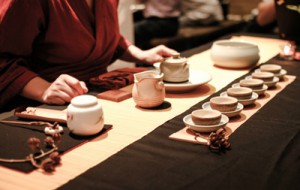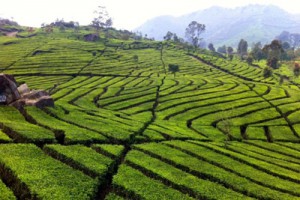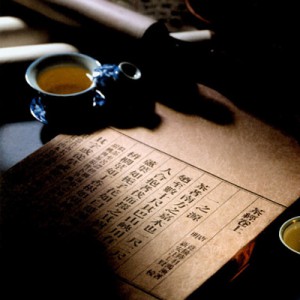About Chinese Tealeaves
Delivering the world the best quality Chinese tea leaves!
Our Story
 Chinese Tealeaves, a Chinese tea manufacturer, wholesaler and supplier, specializes in tea planting, production, selling and research. Consistently adhering to the Chinese traditional tea craftsmanship and Chadao since its establishment in 1990s, Chinese Tealeaves has been recognized as the leading successor and innovator of Chinese tea cultures. As a top-level Chinese tea wholesaler & supplier, we’re able to supply nearly all types of teas such as Black tea, Green tea, White tea, Yellow tea, Anxi Oolong, Dan Cong Oolong, Wuyi Rock Oolong, Dark tea, Pu-erh tea, Scented tea, Flowering tea, Herbal tea and Tea Powder.
Chinese Tealeaves, a Chinese tea manufacturer, wholesaler and supplier, specializes in tea planting, production, selling and research. Consistently adhering to the Chinese traditional tea craftsmanship and Chadao since its establishment in 1990s, Chinese Tealeaves has been recognized as the leading successor and innovator of Chinese tea cultures. As a top-level Chinese tea wholesaler & supplier, we’re able to supply nearly all types of teas such as Black tea, Green tea, White tea, Yellow tea, Anxi Oolong, Dan Cong Oolong, Wuyi Rock Oolong, Dark tea, Pu-erh tea, Scented tea, Flowering tea, Herbal tea and Tea Powder.
Chinese Tealeaves is renowned for Keemun Black Tea. Every year, our premium Keemun Tea such as Keemun Mao Feng and Keemun Gong Fu is sought after by tea connoisseurs. Chinese Tealeaves is even well positioned to be your speciality tea wholesaler & supplier to help you source the finest and rarest Chinese teas such as Lapsang Souchong, Long Jing Tea, Huang Shan Mao Feng, Tai Ping Hou Kui, Jasmine Pearl Tea, Silver Needle White Tea, Wuyi Rock Oolong, Phoenix Dancong Oolong and more.
Chinese Tealeaves enjoys an enviable reputation for its expertise in catering for customers’ needs. Our clients comprise of well-known and respected tea companies internationally, many of whom have been in business with us for decades. To meet the needs of oversea tea shops, tearooms, tea houses, hotels, restaurants, retailers and wholesalers, Chinese Tealeaves started to provide the oversea door to door tea wholesale service in 2001. The service grows rapidly and greatly welcomed by our distinguished customers including five-star properties and Michelin chefs worldwide.
Family Tea Gardens
 Some of our clients outside China prefer so-called “organic tea”. Actually, Chinese tea lovers seldom use the concept “Organic”. “Organic tea” in China is not necessarily traditionally produced tea, but it’s produced especially for export. They are usually grown on large-scale farms organized and managed by local governments.
Some of our clients outside China prefer so-called “organic tea”. Actually, Chinese tea lovers seldom use the concept “Organic”. “Organic tea” in China is not necessarily traditionally produced tea, but it’s produced especially for export. They are usually grown on large-scale farms organized and managed by local governments.
These teas are made in large farms and factories, where tea leaves have been machine bruised, machine rolled, and machine fired. Modern technology generally serves only to increase efficiency at the expense of quality. These teas are obviously not the same as completely handmade teas by tea masters with traditional methods.
Some of our loose leaf teas (Anxi Oolong, Dan Cong Oolong, Wuyi Rock Oolong, Pu-erh Tea, and some black teas) are sourced from small family tea farms where the planting areas are very limited, and only one to two teas are produced. These tea farmers are using chemical-free techniques to plant their tea trees. They continue using the traditional techniques developed by their ancestors. Their teas are hand-made and hand-crafted. These tea farmers are usually proud of winning in the annual tea competitions (doucha – a traditional Chinese tea ceremony).
History of Chinese Tea
 Tea, as with grape wines for France, is one of the most well-known and celebrated name cards for China. The six main tea series all originates from China, which fully demonstrates the great wisdom and creativity of the ancient Chinese people.
Tea, as with grape wines for France, is one of the most well-known and celebrated name cards for China. The six main tea series all originates from China, which fully demonstrates the great wisdom and creativity of the ancient Chinese people.
The history of tea is long and complex, spreading across multiple cultures over the span of thousands of years. Tea originated in China during the Shang dynasty (17th – 11th century B.C.) as a medicinal drink. An early credible record of tea drinking dates to the 3rd century A.D., in a medical text written by Hua Tuo (Approximately 145 – 208 A.D.). Tea was first introduced to Portuguese priests and merchants in China during the 16th century. Drinking tea became popular in Britain during the 17th century.
In a popular Chinese legend, Shennong, the legendary Emperor of China and inventor of agriculture and Chinese medicine was drinking a bowl of just boiled water due to a decree that his subjects must boil water before drinking it some time around 2737 B.C. when a few leaves were blown from a nearby tree into his water, changing the color. The emperor took a sip of the brew and was pleasantly surprised by its flavor and restorative properties. A variant of the legend tells that the emperor tested the medical properties of various herbs on himself, some of them poisonous, and found tea to work as an antidote. Shennong is also mentioned in Lu Yu’s (733-804 A.D.) famous early work on the subject, Cha Jing. A similar Chinese legend goes that the god of agriculture would chew the leaves, stems, and roots of various plants to discover medicinal herbs. If he consumed a poisonous plant, he would chew tea leaves to counteract the poison.
 A rather gruesome legend dates back to the Tang Dynasty (618-907 A.D.). In the legend, Bodhidharma, the founder of Chan Buddhism, accidentally fell asleep after meditating in front of a wall for nine years. He woke up in such disgust at his weakness that he cut off his own eyelids. They fell to the ground and took root, growing into tea bushes. Sometimes, another version of the story is told with Gautama Buddha in place of Bodhidharma.
A rather gruesome legend dates back to the Tang Dynasty (618-907 A.D.). In the legend, Bodhidharma, the founder of Chan Buddhism, accidentally fell asleep after meditating in front of a wall for nine years. He woke up in such disgust at his weakness that he cut off his own eyelids. They fell to the ground and took root, growing into tea bushes. Sometimes, another version of the story is told with Gautama Buddha in place of Bodhidharma.
Whether or not these legends have any basis in fact, tea has played a significant role in Chinese culture and Oriental cultures for centuries as a staple beverage, a curative, and a status symbol. It is not surprising, therefore, that theories of its origin are often religious or royal in nature.
